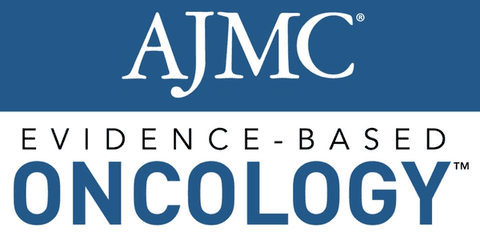Article
Struggles in Developing Precision Medicine for Gastroesophageal Cancers
Author(s):
The challenges in precision oncology in gastric cancer is driven by its inter- and intra-tumoral heterogeneity, leaving chemotherapy as the standard of care.
While precision oncology has shown hope and benefit for some cancers, such as lung cancer, kidney cancer, and melanoma, gastroesophageal cancers (GEC) have been more challenging. A recently published review described advances in immune checkpoint inhibitor (ICI) trials.
GEC may be classified as gastric cancer (GC) and esophageal cancer (EC); overall, they are a leading cause of cancer illness and death. The challenges in precision oncology in GC is driven by its inter and intra-tumoral heterogeneity, leaving chemotherapy as the standard of care.
Generally speaking, platinum and 5-fluoropyrimidine (5FU) combination regimens are used in first-line treatment; median overall survival (OS) in clinical trials for platinum/5FU is 11 months.
The 2 FDA-approved programmed death 1 (PD-1) inhibitors, nivolumab (Opdivo) and pembrolizumab (Keytruda) work by blocking PD-1, a protein on immune T cells. But the therapy does not work for all patients.
In GEC, PD-1 expression is determined by of PD-L staining cells (tumor cells, lymphocytes, macrophages) divided by the total number of viable tumor cells, multiplied by 100. The specimen is considered to have PD-1 expression if CPS ≥ 1.
ICIs have had mixed results in GEC; for a subgroup of patients they have shown durable responses and survival benefit, while several recent randomized phase 3 studies have reported negative results.
Trastuzumab was one of the first targeted therapies that received FDA approval in combination with cytotoxic chemotherapy for HER2-positive patients with GC, and HER2 remains one of the few biomarkers of clinical value for metastatic GC.
These are a few of the GEC studies covered in the review:
ATTRACTION-2 (nivolumab) was a randomized phase 3 study run in Japan, South Korea, and Taiwan involving patients with metastatic GC that had progressed on at least 2 prior lines of therapy. In total, 493 patients were randomized to intravenous (IV) nivolumab 3 mg/kg every 2 weeks vs. placebo. Nivolumab demonstrated OS benefit of 5.3 months, compared with 4.1 months for placebo. Patients with refractory disease had an even greater benefit.
Results from the KEYNOTE-059—Cohort 1 (pembrolizumab) study led to the FDA approval of pembrolizumab for third-line metastatic GC. This trial included patients with metastatic GC that had progressed on at least 2 prior lines of therapy, and were treated with IV pembrolizumab 200 mg (flat dose) every 3 weeks. Of the 259 patients enrolled, objective response rate (ORR) was 12% and median OS was 5.6 months.
In the phase 3 JAVELIN 300, 371 patients were randomized to IV avelumab (an anti-PD-L1 monoclonal antibody) 10 mg/kg every 2 weeks or physicians' choice of chemotherapy (paclitaxel or irinotecan). The study failed to achieve its primary endpoint of OS. There was no difference in OS between avelumab or chemotherapy (4.6 vs. 5.0 months). And PFS was better in the chemotherapy arm, compared with avelumab [2.7 vs. 1.4 months, HR = 1.73].
The authors noted that the control chemotherapy arm in the JAVELIN study had a numerically higher PFS and similar OS compared with nivolumab in the positive ATTRACTION-2 study, which they said “highlights the importance of an appropriate control arm in designing clinical trials.”
In a study for metastatic third-line esophageal cancer (KEYNOTE-180) pembrolizumab was used in a single-arm study of metastatic EC. As with other studies, patients had been treated with at least 2 prior lines of systemic therapy. In total, 121 patients were treated with pembrolizuma —63 with esophageal squamous cell cancer (ESCC) and 58 with esophageal adenocarcinoma (EAC). ORR was 14% for ESCC and 5% for EAC. Median PFS was 2.0 months and median OS was 5.8 months.
KEYNOTE-61, a randomized phase 3 study in metastatic second-line gastric cancer, failed to demonstrate a statistically significant survival difference between pembrolizumab and weekly paclitaxel chemotherapy. The study randomized 592 patients, with the first 489 patients (83%) being enrolled regardless of PD-L1 status. Median OS was 9.1 months for pembrolizumab vs. 8.3 months for paclitaxel. PFS was 1.5 vs. 4.1 months, in favor of paclitaxel. The researchers wrote that the study “had an interesting phenomenon of the survival curves crossing between the two arms of the trial (for OS and PFS at ~8 to 10 months). The crossing of the survival curves violates the assumption of proportional hazards and does not yield a meaningful analysis using Cox regression.” Some patients on pembrolizumab did have a prolonged and durable benefit. A larger proportion of patients received third-line treatment in the paclitaxel arm compared to pembrolizumab; the authors said that the discovery of a “negative predictive biomarker of immunotherapy could potentially help these patients avoid ineffective therapy.”
In a study of patients with metastatic second-line esophageal cancer, 628 patients were randomized; the trial met 1 of the 3 primary endpoints (PD-L1 CPS ≥ 10 subgroup). In the combined positive score ≥ 10 subgroup, pembrolizumab had a significant improvement in OS over paclitaxel (9.3 vs. 6.7 months). On the basis of these results, pembrolizumab was granted FDA approval for EC with CPS ≥ 10. But there was no difference in survival between pembrolizumab and chemotherapy and no statistically significant difference in survival in the ESCC subpopulation.
In a study of ipilimumab in metastatic GC, patients who had achieved at least stable disease with first-line chemotherapy were randomized to ipilimumab or continuation of chemotherapy. The study of 114 randomized failed to meet its primary endpoint of PFS. The median PFS of ipilimumab was inferior to chemotherapy (2.9 vs. 4.9 months, HR 1.44), while OS was similar (12.7 vs. 12.1 months).
Reference
Sundar R, Smyth EC, Peng S, Yeong JPS, Tan P. Predictive biomarkers of immune checkpoint inhibition in gastroesophageal cancers.
Front Oncol. [Published online May 15, 2020]. doi: 10.3389/fonc.2020.00763.




